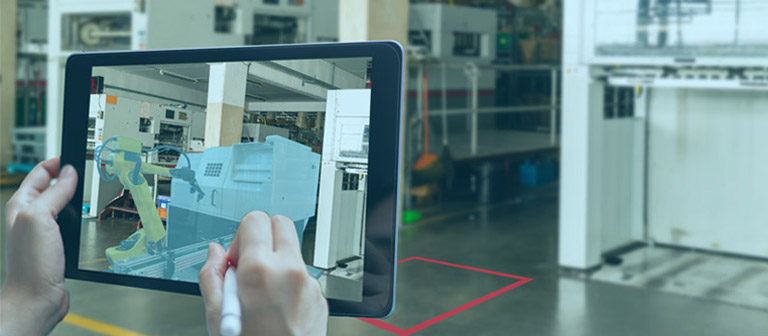
04 Feb MicroAI Factory™ and the Power of Predictive Maintenance
Machine output and uptime are critical KPIs (key performance indicators) for any machine-intensive enterprise. Lack of real-time insights, unscheduled downtimes, and static maintenance routines can all combine to create a production ecosystem that performs well below its optimum capability.
Preventive maintenance is the legacy approach to Machine Intelligence. For several decades that approach was sufficient to maintain decent levels (i.e. ~ 70%) of OEE (overall equipment effectiveness). To gain and maintain competitive advantage “decent” performance is no longer enough. Manufactures across every industry segment are now looking at Edge AI (artificial intelligence) and ML (machine learning) technologies to power a shift from preventive to predictive maintenance.
What is predictive maintenance? How does it work? Why is it better that the old preventive approach?
Predictive Maintenance Defined
An intelligent predictive maintenance solution utilizes Endpoint AI and Edge-native AI technologies to enable equipment operators and stakeholders to gain deeper insights into the real-time status and heath of their machine assets. Asset-specific data is analyzed to predict when that asset will require maintenance. In this method, maintenance is performed based on actual machine-generated information instead of the old time-based approach.
The primary differences between predictive and preventive maintenance are summarized below.
| Predictive | Preventive | |
| AI and ML enabled? | Yes | No |
| Maintenance triggers | Based on analysis of real-time and historical asset performance data. Supported by device and machine AI-enabled endpoint analytics. | Based on static, manual, schedules and routines. Often hindered by lack of insight into current asset health. |
| Operational impact | Maintenance performed when needed to maintain asset health, minimizing production impact. | Maintenance often performed too early or too late, resulting in non-optimized performance and/or unnecessary downtimes. |
| Business impact | Reduced maintenance costs, increased output, better resource utilization, and optimized OEE. | Higher maintenance costs, non-productive maintenance routines, shorter asset lifespans, and sub-par OEE. |
| Competitive impact | Higher production rates + longer asset lifespans + reduced maintenance costs = lower production costs and enhanced competitive position. | Non-optimized production capacity + degraded asset health + reliance on human-dependent, non-automated, processes = higher production costs, higher prices, and competitive weakness. |
Predictive Maintenance at the Endpoint
MicroAI Factory is an Edge-native AI solution that provides manufacturers with predictive maintenance capabilities that produce advantages in production output, machine utilization, operator efficiency, production costs and OEE. Features of MicroAI Factory include the following:
- Microcontroller-based intelligence: MicroAI Factory is unique in that it embeds predictive maintenance intelligence directly into the microcontroller (MCU) of the manufacturing device or machine. This approach offers distinct advantages when compared to cloud-based solutions.
- Completely self-contained
- Local collection and analysis of asset data
- Reduction in the amount of data transferred to the cloud
- More secure from cyber-attack
- Lower cost
- Customizable algorithms: Ability to customize AI-enabled algorithms on an asset-by-asset level to accommodate specific operational or environmental conditions for the device or machine. Predictive maintenance routines are based on real-time analytics that provide insights into current and historical performance trends.
- Data aggregation and dashboarding: Most legacy preventive maintenance routines rely on the manual collection of asset data and subsequent siloed analysis of that data. MicroAI Factory provides automatic aggregation, analysis, and presentation of asset data. Asset owners can quickly customize asset analytics to best meet their operational needs.
- Workflow optimization: MicroAI Factory embeds workflows that learn, train, and evolve. Predictive maintenance is supported by workflows that are automated and intelligent. This reduces or eliminates the need for human intervention in the maintenance scheduling process.

Predictive Maintenance – Operational and Business Value
Any technological innovation is only as good as the tangible value that it provides to its adopters. Preventive maintenance powered by MicroAI Factory’s Edge-native AI technology delivers both operational and business value. Just a few examples would include:
- Holistic and self-contained ecosystem: Non-siloed, at-a-glance, perspective of real-time performance and events. A more comprehensive and efficient predictive maintenance solution.
- Deeper visibility and insights: Ability to fast-track issue identification and corrective action and to identify recurring problems based on historical analytics.
- Increased machine and device uptime: Elimination of downtimes due to unnecessary maintenance activities and/or unforeseen malfunctions.
- Optimization of production capacity: Reduction in machine downtime equates to increased output and higher OEE scores.
- Improved product quality: Predictive maintenance helps detect those machine performance issues that can negatively impact the quality of the product(s) being produced.
- Reduced maintenance costs: Cost is reduced via elimination of unnecessary maintenance activities, less reliance on human interaction, and automation of processes.
- Extension of capital-intensive asset lifespans: Real-time asset health monitoring, process-driven mitigation actions, and predictive maintenance capability all combine to extend the lifespan of expensive assets.
- More competitive operational overhead: Improved asset health and performance reduces operational costs and has a beneficial trickle effect across other business costs.
MicroAI Factory is bringing Edge-native AI predictive maintenance to companies within the manufacturing, telecom, energy, automotive, and semiconductor sectors. Factory floors are being optimized to reach new levels of operational excellence and OEE.

